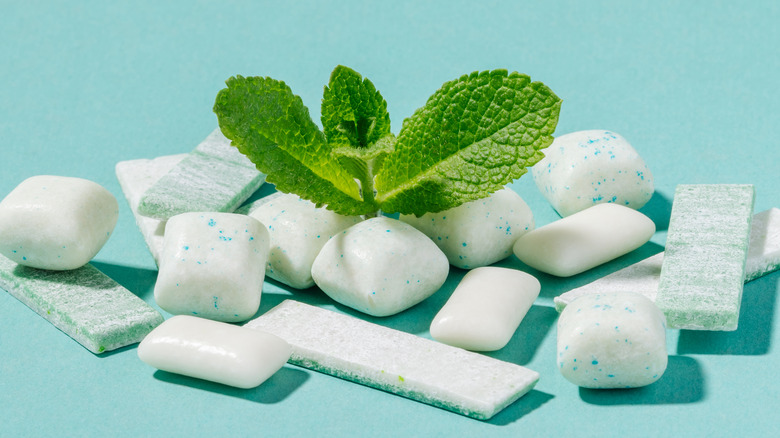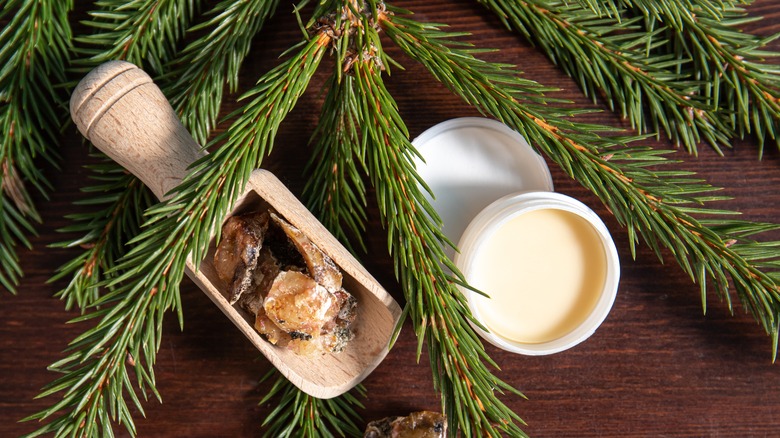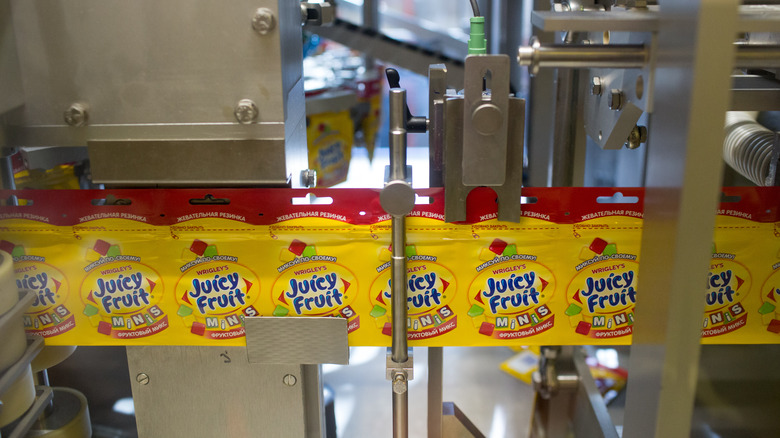The Ancient Origins Of Chewing Gum, Explained
Many people today consider chewing gum a normal part of life. It's elevated to pop-culture status in many ways, with a constant presence in baseball culture across America, from fields to dugouts and bubblegum trading cards. The professional Wrigley Field in Chicago is even named after a popular chewing gum, spawning the official Big League Chew brand of shredded gum. Pop stars like Madonna extol the virtues of big pink bubbles, and there's even a thing called chewing gum art.
But as trendy as it seems today, our modern, lip-smacking, bubble-blowing society didn't invent the concept or the reality of chewing gum. Though earlier versions came from different sources and had more varied applications, gum in one form or another has been chewed for thousands of years. An archaeological site in Denmark discovered a rudimentary Stone-Ages type of chewing gum made from the oozing pitch, or tar, of birch bark, which could have been used for chewing enjoyment, and to relieve toothache pain and other ailments.
However, birch pitch was so potent that it also served as a super strong adhesive — not exactly something we'd embrace putting in mouths today. It was instead our ancestors in the Americas that set the stage for modern chewing gum, starting long before the United States was a gleam in anyone's eye.
Ancient evolution of chewing gum pleasure
We have the ancient Mayan and Aztec societies of the early Americas to thank for the core ingredient precipitating Western-style chewing gum. That would be chicle, an oozing substance from sapodilla trees. Both civilizations chewed it for everything from thwarting hunger to freshening breath or cleaning teeth. Like today, there even appears to have been societal etiquette involving chewing the gum in public. But it would take generations before chicle launched a flurry of commercial activity in the United States.
Meanwhile, a resin from spruce trees had its moment in the limelight of gum production. Long embraced by Indigenous communities in North America, the practice of chewing spruce resin eventually led to a commercial version involving boiled resin and cornstarch. The developer, John Curtis, even launched America's first chewing gum factory in Maine. But the taste and texture of resin failed to gain popularity, leading to a paraffin-wax stint, and an eventual throwback from across the border: chicle.
By the 1850s, Mexico, the former home of the Aztecs, had exiled its President, Antonio Lopez de Santa Anna, who landed in the United States. And guess what he brought with him: the secret powers of chicle. His non-culinary intent ultimately failed, but the genie had been un-bottled. An inventor by the name of Thomas Adams recognized the huge potential for chicle in chewing gum — and the rest is bubbly history. That's until it morphed yet again.
20th century chewing power
Before the next century began, a humble soap salesman by the name of William Wrigley Jr. discovered the broad potential for chewing gum, branding two new versions in 1893 as Wrigley's Spearmint and Juicy Fruit. His salesman instincts kicked in, undercutting competitors with direct giveaways to American families via mail. Free sticks of gum landing on doorsteps, along with kid-oriented salesmen characters such Wrigley Arrow and Spearmen, became a phenomenon that catapulted Wrigley from peddler to mega-rich entrepreneur.
Wrigley's company survives in Chicago to this day, albeit under the helm of Mars, Inc., producing its namesake gum products as well as iconic candies such as Starburst and Life Savers. Advertisement campaigns such as the Doublemint Twins are likely unnecessary, but the branding of the Wrigley name remains iconic. After the Wrigley family bought the Chicago Cubs baseball team in the 1920s, the ballpark took on the legacy name of Wrigley Field to honor its owner, the chewing-gum king himself.
It's safe to say that chewing gum now has its own cult following, in no small part because of its appearance in zany cultural phenomenons such as the "Willy Wonka and the Chocolate Factory" film. A standout scene introduces a "Three-Course Dinner Chewing Gum" that morphs in flavor from tomato soup to roast beef, baked potato, and finally into blueberry pie with ice cream. The character, Violet Beauregarde, then inflates like a bubble into a huge blueberry balloon. Believe it or not, flavor-changing gum actually does exist.


